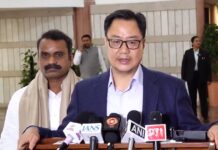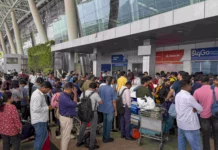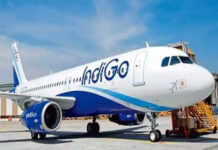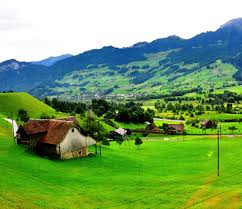 Chamba is a small town in the state of Himachal Pradesh in India. It serves as the district headquarters of the Chamba district in Western Himalayas. The region is at an altitude of nearly 3300 feet above sea level. The town, the valley and the district in which this town is situated share a common name of Chamba.
Chamba is a small town in the state of Himachal Pradesh in India. It serves as the district headquarters of the Chamba district in Western Himalayas. The region is at an altitude of nearly 3300 feet above sea level. The town, the valley and the district in which this town is situated share a common name of Chamba.
The town is situated at the junction of River Ravi and River Sal, a tributary of Ravi. The Shah Madar hill serves as a beautiful backdrop to the town towards east. The old capital of this region was Bharmour, which is located 75 kilometres from Chamba. In the year 920, after conquering the Ranas and the Thakurs at the lower Rani Valley, Raja Sahil Verma shifted the capital of the kingdom to Chamba, following the specific request of his daughter Champavati. Chamba was named after her.
The town is known for its spectacular temple architecture and splendid natural beauty. Situated amongst beautiful valleys, it has tourists visiting the place throughout the year. It has rich flora and fauna in the sub- Himalayan ranges and enjoys a pleasant climate throughout the year. The temples, lakes, and wildlife sanctuaries in the region make it an ideal tourist destination. This place is also known as the Land of Shiva. It has a serene and untouched natural beauty.
Tourist attractions
Laxmi Narayan temple: Built by Raja Sahil Verma in the 11th century, the Laxmi Narayan temple complex is said to be the largest and oldest temple complex of Chamba. There are six temples in the complex which are arranged from north to south and dedicated to either Lord Vishnu or Lord Shiva. Apart from these main temples, the complex houses three more temples namely: Radha Krishna Temple, Shiva Temple of Chandragupta and Gauri Shankar Temple.
According to the local legend, it is said that Raja Sahil Verma sent nine of his sons to the Vindhyas mountains to get a rare marble for construction of the Vishnu idol. However, eight sons of the King lost their lives while undertaking the task and only the eldest son succeeded to bring the marble. The present day temple of Laxmi Narayan houses the idol of Lord Vishnu which is built of this rare marble.
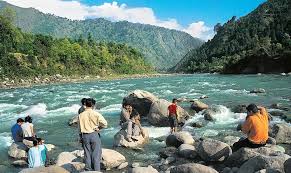 Rang Mahal: Rang Mahal was founded by Raja Umed Singh. It is a beautiful palace with architectural blend of Mughal and British styles. The walls of the palace are decorated with beautiful Hill Style paintings depicting the life of Lord Krishna.
Rang Mahal: Rang Mahal was founded by Raja Umed Singh. It is a beautiful palace with architectural blend of Mughal and British styles. The walls of the palace are decorated with beautiful Hill Style paintings depicting the life of Lord Krishna.
Dainkund Peak: A drive, a walk and a breathtaking view! Yes this is the route to Dainkund Peak, Dalhousie. Being the highest mountain peak in the region, it offers a complete 360° view of the entire valley. The road en route the peak is embellished with flowers on both sides that are a treat to the eyes. One has to put on one’s walking shoes to cover a good 30-40 minutes of climbing to reach the peak.
Bhuri Singh museum: The Bhuri Singh Museum contains priceless contributions of Raja Bhuri Singh managed by the effortless services of Dr. J. Ph. Vogel. It is one of the major attractions of the state. The museum is a grand collection of invaluable assortments that have immortalised the art, culture and history of Chamba.
The museum was initialised by the royal collections and paintings donated by Raja Bhuri Singh. It has since then expanded a great deal. The gallery features Basohli paintings, rare Sarda script, embroidered Pahari miniatures, coins, royal jewellery, costumes, arms, stone sculptures, memorial stones, carved doors, frescoes, copper plate grants, musical instruments and Guler-Kangra paintings, to name a few.
Panch Pulla: Panch Pulla which literally means five bridges is another beautiful place in the region which lures the attention of a number of tourists due to its tranquil surroundings as well as scenic charm.
Akhand Chandi Palace: Akhand Chandi Palace is a living example of Raja Umed Singh’s architectural skills and knowledge. It was built by Umed Singh over sprawling acres of greenery to serve as his residence. While the green colour roof is the distinct feature of the palace, other structures like hand painted walls, delicately carved doors, spread out wood and glass work and window frames make it a perfect example of a colonial type building.
Events / Festivals
 Minjair Festival: Minjair Festival in Chamba is a week-long festival celebrated in the month of July or August or the month of Shravan according to Hindu calendar. It takes place in the Chaugan area which is converted into market place during the festival. The festival attracts visitors and participants from all across the country. This colourful festival is marked by processions of various deities. People dress up in silk tassel. The procession of the festival begins at Akhand Chandi Palace and terminates at the Police Lines Nalhora.
Minjair Festival: Minjair Festival in Chamba is a week-long festival celebrated in the month of July or August or the month of Shravan according to Hindu calendar. It takes place in the Chaugan area which is converted into market place during the festival. The festival attracts visitors and participants from all across the country. This colourful festival is marked by processions of various deities. People dress up in silk tassel. The procession of the festival begins at Akhand Chandi Palace and terminates at the Police Lines Nalhora.
Best time to visit
Chamba can be vested all through the year but really cold winter days can be avoided.
How to Reach
By Air: The Pathankot airport is the nearest airport at a distance of 120 kilometres. Amritsar, Chandigarh and Kangra are other airports near the town. You can take taxi or buses to reach these airports.
By Rail: The Pathankot railway station is at a distance of 118 kilometres from the town.
By Road: Chamba Bus stand is at a distance of three kilometres from the main Chamba town. Roadway is the best way to reach Chamba from nearby places.

